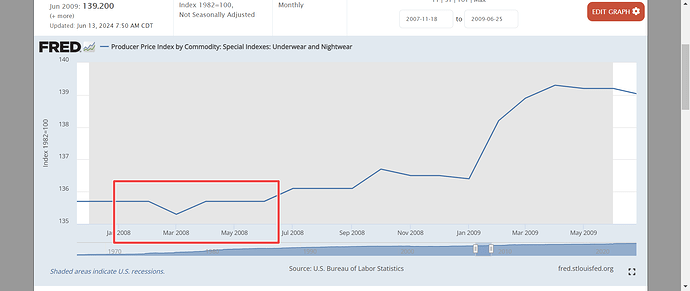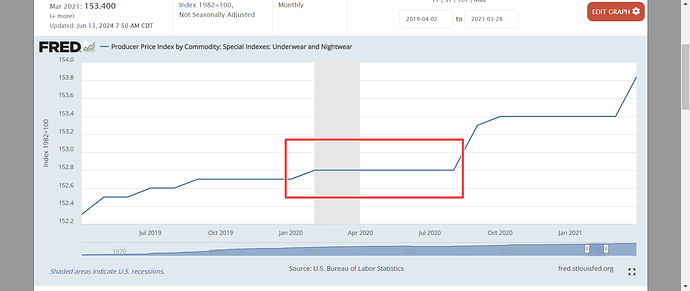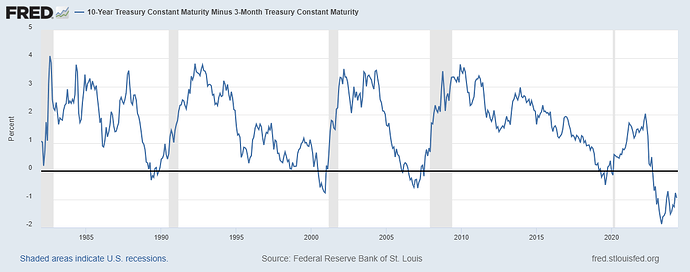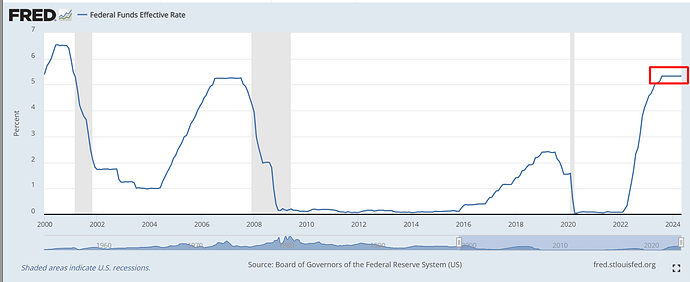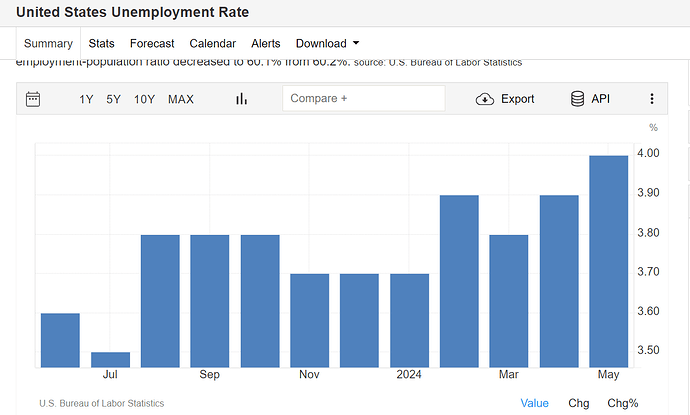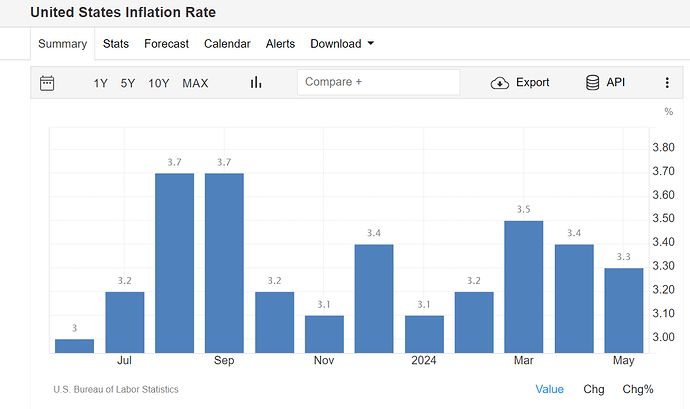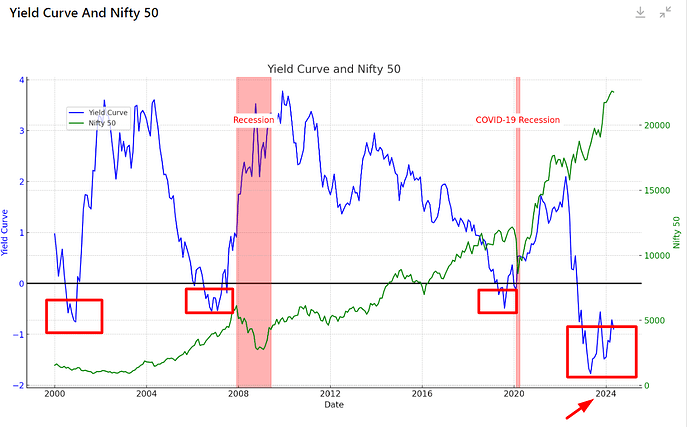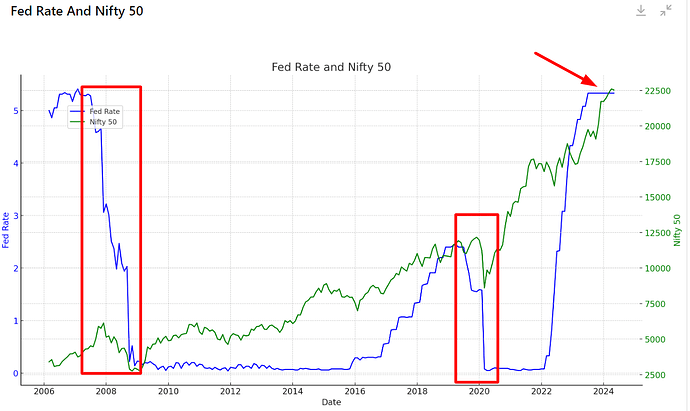Hey folks,
Yes, there is a special index to track Men’s Underwear sales data in the US and here is the link to track that. So far, it looks good though.
This data was coined by Alan Greenspan, former US Federal Reserve chairman, as a way to gauge economic slowdowns in the USA. Greenspan’s concept was that in prosperous times, consumers feeling confident about the economy would be more inclined to buy new underwear. Conversely, during economic downturns, consumers might delay purchasing new underwear, considering it a non-essential expense that could be postponed.
Although this index did decline during the 2008 recession and remained flat during the COVID-19 pandemic, I found it less convincing overall due to its numerous false signals. It seems possible that Mr. Greenspan chose to highlight only a selective part of the narrative.
Given the current clamors of an economic slowdown in the US, while India enjoying the lifetime high of Nifty, I wanted to share some insights I found intriguing. I’ve been hearing about the longest-lasting, deepest inverted yield curve recently and became curious about its implications. Historically, the inverted yield curve has been a reliable indicator of upcoming recessions and economic slowdowns, accurately predicting recessions on multiple occasions.
To set the context right, I am not saying that a recession is imminent; it might happen in a year or two, or it might not happen at all. With central banks around the world wielding the “magical wand” of Quantitative Easing and printing money as needed, the situation is unpredictable. I’m simply sharing my findings on the past events and the inferences that can be drawn from them.
So, what exactly is an inverted yield curve, and is it really that important? History shows that whenever the yield curve has inverted, the US economy has entered a recession 12 out of 14 times. Currently, as I write this, we are experiencing the deepest and longest-lasting inverted yield curve.
An inverted yield curve occurs when short-term bond or bill interest rates are higher than long-term interest rates. This is often seen as a bad sign for the economy. When long-term rates decrease, it indicates that markets expect the economy to deteriorate and that the Fed will cut short-term rates in the future. Here’s what has historically happened when this inversion occurs.
Now, if we compare it with the Fed funds rate, which has already peaked as the Fed has kept interest rates constant since August 2023, and reconcile this data with historical interest rate cuts by the US Federal Reserve after these peaks, it forecasts an impending downturn. This seems slightly contradictory because rate cuts are typically a positive sign for markets. However, the current environment is unique: unemployment rates in the US have begun to rise, global debt is at all time high while interest rates are declining(Fed target is of 2% btw), signifying a slowdown in demand.
Now, some of you might argue that the US data has little to do with the Indian markets, especially with domestic inflows being very strong. SIP investments are at an all-time high of around ₹20,904 crore, leading some of us to believe that this time, it will be different. Well, we are free to believe whatever our biases confirm.
If you observe the relation of Nifty 50 with the yield curve(10 Yr vs 3-month) and the fed funds rate data, Nifty has faced major corrections post the rate cuts by Fed and when the yield curve goes back into the positive territory.
Indian markets are at an all-time high, and so are our portfolios. Like everyone, I am also enjoying this ride, but with a bit of caution. Hasn’t this always been the case that when everyone was euphoric, the markets eventually nosedived?
As far as I am concerned, I am simply developing my “What If This Really Happens” plan and preparing for the worst-case scenario. I don’t know how things will unfold in the coming years, but some contingency planning can surely be done. (Just in case)
I hope and pray it never happens, but bubbles do burst someday.
The only factor that suggests there won’t be a recession is that a retailer like me is talking about it in advance. Well, only time will tell.
And yeah, my brother just bought a pair of boxers last night, so it seems like he alone wants to prove Mr. Greenspan wrong this time. At least for now, he can think he can.
I would love to hear your comments on how you would prepare and brace yourself and what you will do if markets were to tank 30-40%. How would you protect your portfolios by hedging, or if you have any other school of thought, do share it with the community.
Until then, Ciao Adios!!
